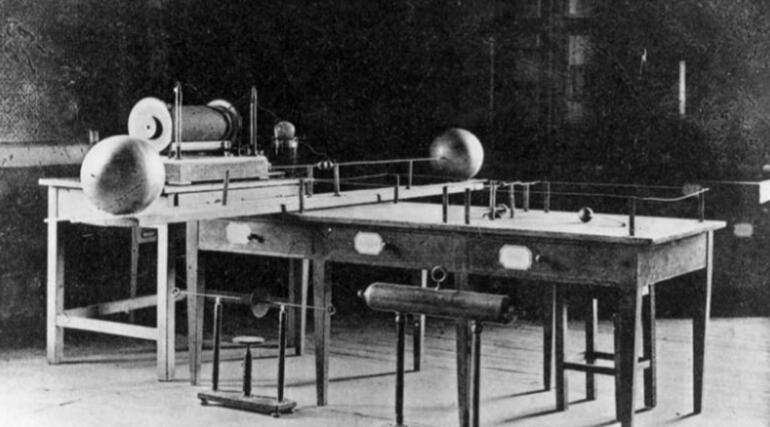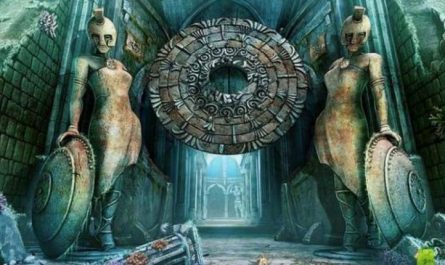The brilliant achievements of classical physics also talked about how great Newton really is. Finally, we also said that at the end of the 19th century, that is, at the beginning of the 20th century, there were two dark clouds floating above the Classical Physics Building, and the distance can still be faint. I saw a few small dark clouds that were slowly coming in, giving people a feeling of “mountain rain is about to come and wind is all over the building”.
These dark clouds lingering over the classic physics building are our theme today-“dilemma.”
In April 1900, the new century had just begun. It was necessary for all walks of life to hold a conference to summarize the past and look forward to the future, and the scientific community was no exception.
On the 27th of this month, stellar scientists from various European countries came to the Royal Institute for a meeting. At this time, Einstein was still studying at ETH Zurich, but he was about to become a vagrant.
At this time, Boll was still in high school, and it is estimated that he was playing football heartily on the playground. The two of them are still not physicists, let alone men with a face.
At the scientific report meeting, the 76-year-old old man Lord Kelvin gave an opening speech, in accordance with the usual practice to tout how successful the current physics is. The people below could not help but look up 45° and worship classical physics again. However, the old man Turning the conversation, he said that there are now two dark clouds, one floating in the Thermodynamics Building and the other floating in the Electrodynamics Building. The dilemma caused by these two dark clouds cannot be solved yet.
The dark cloud on the electrodynamics building refers to how matter moves in the ether? The dark clouds on the Thermodynamics Building refer to the difficulties encountered in the experiment of Maxwell-Boltzmann’s energy equalization theorem.
Speaking of people, the first dark cloud is the well-known Michelson-Morley experiment. They originally wanted to detect the difference between the motion of the earth in the ether and the difference in the speed of light in the vertical direction of the interferometer, but finally found that the speed of light did not change. , Which proves that the ether does not exist.
All physicists are a little confused when seeing this result, which means that there is an irreconcilable contradiction between classical electromagnetism and Newtonian mechanics. This is a contradiction within classical physics. The person who solves this problem is Einstein, who is now in love and is about to become a vagrant. Of course, this is the category of the theory of relativity, and we will not discuss it too much.
Another dark cloud is the more well-known blackbody radiation problem. This problem is a pit dug by Gustav Kirchhoff of Heidelberg University in Germany in 1859. He did not know when he dug this pit. There is no way to solve the problem of black body radiation under the framework of classical physics, let alone that it will involve the new discipline of quantum mechanics.
He raised this question for two reasons. First, before 1859, not only physicists, but everyone included, as long as you had a stove in the winter, you would have discovered such a phenomenon. Different colors of light will be emitted at different temperatures. As the temperature rises, the color changes from dark red to orange to blue and white.
And objects of different materials, at the same temperature, emit the same color of light, which indicates that the radiation of the object in a hot state has nothing to do with the material, and it has nothing to do with the size and shape of the object.
Secondly, Kirchhoff himself has a deep research on spectroscopy (I will mention the issue of spectroscopy later, this is also a small dark cloud), so Kirchhoff wanted to figure out an object. The relationship between temperature and its radiant intensity at each frequency of the spectrum.
In order to study this problem, Kirchhoff also conceived an object that does not reflect any electromagnetic radiation, that is to say, the electromagnetic radiation emitted by this object is radiated by itself.
Since there are no objects that do not reflect electromagnetic radiation in nature, Kirchhoff conceived a hollow ball with a small hole on its surface;
The outer surface of the hollow sphere is a heat-insulating layer, which is coated with a material that absorbs electromagnetic radiation, and it is very rough. When a beam of light enters the small hole of the hollow sphere, it will be completely absorbed by multiple reflections in the sphere. Therefore, the inside of the hollow ball becomes a perfect black body. If electric heating is used to provide heat to the inside of the hollow ball, the electromagnetic radiation escaping from this small hole is the perfect black body radiation.
So Kirchhoff’s problem is called blackbody radiation problem, or cavity radiation problem.
He hopes that by studying the radiation of an ideal black body, he can come up with a formula. In the future, he only needs to know the temperature of an object to calculate the energy distribution of the object’s radiation spectrum, or if we now know the energy distribution of the radiation spectrum of an object, we can Calculate what its current temperature is.
Having said that, do you think it is more practical to study this question, for example, what is the temperature of the sun? We can’t run to the sun to measure it, so as long as you have a black body radiation formula, you can calculate the sun’s temperature from its spectrum;
For example, during steelmaking, the temperature of molten steel often reaches several thousand degrees Celsius, so how do you measure the temperature of molten steel? I can’t take a thermometer to measure it. Iron has become liquid. What thermometer can withstand such a high temperature?
So as long as there is a blackbody radiation spectrum formula, simply analyze its spectrum, and the temperature will come out immediately.
For another example, in the 1880s, mankind entered the era of electrification. The most representative thing is the emergence of lighting fixtures. At that time, the lighting fixtures with a wider audience were incandescent lamps, but in the process of incandescent lamp production, we encountered this The problem.
The temperature of the filament is the most appropriate, that is, at which temperature, the spectral peak of the incandescent lamp will fall more in the range of visible light. The filament working at this temperature can reduce unnecessary infrared radiation. In other words, reduce unnecessary heat loss. After all, light bulbs are used for lighting, not for heating.
At that time, no one knew how many watts of light bulbs we should build is suitable, so there is no reference standard for the entire industry.
You must know that making light bulbs was very profitable at that time, which involved huge interests, except for large companies such as Siemens Electric Company, Westinghouse Electric Company, and Edison Electric Company;
As long as people who have a chance to find a way, they are all making small workshops to make light bulbs. Einstein’s father and uncle saw this business opportunity to make a fortune, but they have always been a small mess.
Von Siemens himself generously donated a piece of land in the suburbs of Berlin. In 1887, Germany established the Imperial College of Technology on this land, buying the best experimental equipment, hiring the best scientists in the country, and specializing in research and testing. The purpose of this new product is to formulate industry standards. Of course, the problem of black body radiation has also become the primary problem solved by this college.
So in the 1890s, the blackbody radiation problem rose from a simple academic problem to a strategic problem at the national level. Since then, more than half of the scientists in Germany have delved into the study of black body radiation. This is why quantum theory started in Germany.
Since Kirchhoff put forward the blackbody radiation problem, in the next 40 years, this problem has not been solved. There are two reasons. Although Kirchhoff conceived a perfect blackbody model, it could not be made at that time;
After the establishment of the Imperial College of Technology, a cavity black body was created in 1890, but it was discovered that the theory of black body radiation that can be used by physicists is classical electromagnetism and classical thermodynamics. It turned out that the formula was derived from these two theories;
One is Wien of Imperial College in 1896, who proposed the Wien formula based on Boltzmann’s theory of molecular thermal motion, and the other is that Sir Ruili of the United Kingdom in 1900 adopted the theorem of energy equivalence from the perspective of electromagnetic radiation. The human word is to distribute the energy continuously and evenly to each radiation wavelength. He also proposed a formula, neither of which can fit the curve of the blackbody radiation energy distribution very well.
The Wien formula agrees well in the shortwave wavelength, but it is always higher than the experimental data in the longwave range. Ruili’s formula is just the opposite. It agrees well in the longwave range, but as the wavelength decreases, the radiation will be Tends to infinity.
This is the second dark cloud that Father Kelvin said, the difficulty encountered in the experiment of the energy equalization theorem. Regarding some of the more specific problems of black body radiation and how to solve them, we will focus on them in the next video. After all, this is the beginning of quantum theory.
Now that we have finished talking about two dark clouds, let’s talk about a few small dark clouds on the horizon.
The first photoelectric effect problem. We know that the photoelectric effect was solved by Einstein in 1905, but this problem was discovered earlier. In 1887, when Hertz was looking for electromagnetic waves in the laboratory, she discovered the photoelectric effect, but Hertz was then It is only observed that the difficulty of spark generation is different when there is arc light irradiation and when there is no arc light irradiating the induction ring. He didn’t know what was going on at the time, but Hertz was still more pragmatic. He didn’t know or didn’t know. He recorded this phenomenon in detail in the article. When I talk about Einstein later, I will talk about this in detail. After all, Einstein is a veteran of quantum theory.
The second dark cloud is a problem with the linear spectrum of atoms. Earlier we said that Kirchhoff also studied spectroscopy. In the 1850s, he and another chemist at the school, Bunsen, discovered the radiation spectrum of elements.
At that time, people didn’t know whether atoms existed or not, let alone the structure of atoms, and the essential reasons for the chemical properties of the elements. Therefore, chemistry at that time was not as mature and independent as it is now. Subject.
The chemists at that time always felt like an alchemist. They were pouring various bottles and jars every day, mixing different elements together to see what reaction could happen, and then weighing the specific gravity before and after the reaction. Some appearance laws.
Either just take the various elements and burn them under the fire, and burn this one today and another one tomorrow. Since Bunsen improved the gas lamp, it has been even more out of control. The gas lamp improved by him has a higher temperature, which can reach 2300 degrees Celsius, and the flame is very light without thick smoke. This kind of gas lamp is called a Bunsen burner.
Burning and burning, he discovered such a phenomenon, each element has its own unique color under the flame, for example, the color of sodium is yellow, the color of calcium is brick red, and the color of lithium is dark red and potassium. Is purple and so on;
Bensheng told Kirchhoff about this. Kirchhoff said that since the colors are different, the spectra must be different. Or else try a prism, they both built a simple spectrometer with a prism, and found that all The emission spectra of elements are discrete lines, not continuous, just like bar codes, and the bar codes of each element are different.
The two immediately realized the importance of this discovery. Isn’t this the ID card of the element? They recorded all the known spectral lines of the elements. In the future, they only need to burn something into the fire, analyze its spectrum, and then compare the recorded elemental spectra and find that there is sodium and chlorine in it. The one is sodium chloride.
They also used this discovery to explain the Fraunhofer line that has plagued humans for a long time, that is, the dark lines in the visible spectrum of the sun. In fact, all dark lines correspond to the absorption lines of specific elements.
In 1859, they reported this to the German Academy of Sciences, saying that they had known the composition of the sun. At that time, everyone was shocked. It was incredible to know the composition of the sun.
From this incident, we can see that experimental physics is far ahead of theoretical physics. How is the element spectrum formed? Why is it a discrete line? Why is the spectrum of each element different?
This is the problem of atomic linear spectrum that plagued mankind in the 19th century. If you want to solve this problem, you have to wait for Boll who is playing football on the playground to complete his studies.
Finally, there is the problem of the chemical properties of the elements in the periodic table and the similarity of the cycles, which can only be solved by Boll.
Okay, now that we have finished talking about the brilliance and dilemmas of classical physics in the 19th century, next, we will just step into quantum theory and look at the three giants of the old quantum theory Planck, Einstein and Boll. , How to solve the dilemma of classical physics.






